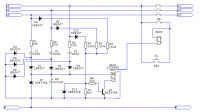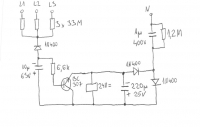Hello, I am a beginner mechatronics who recently pokes something in automation and I have many basic questions
-How does the phase loss sensor work, I heard that it can be done by itself on two relays, could someone send me a diagram of such a phase loss sensor made on 2 relays?
- Since the motor switch disconnects the circuit when the current consumption is slightly higher than the rated motor current, why then we also use thermics (I do not know what is the professional name, thermal relay?)
-Why does the motor circuit breaker not disconnect the circuit when starting the motor when the starting current is even 8x higher than the rated one?
-Why do we sometimes use a phase loss sensor if we have a thermal switch?
If anyone would have any interesting materials / videos / channels on Automation and concepts to help them understand the topics related to it, I was grateful for sharing them with me. And if anyone would have any nice trivia or useful information, please also share them.
Regards
-How does the phase loss sensor work, I heard that it can be done by itself on two relays, could someone send me a diagram of such a phase loss sensor made on 2 relays?
- Since the motor switch disconnects the circuit when the current consumption is slightly higher than the rated motor current, why then we also use thermics (I do not know what is the professional name, thermal relay?)
-Why does the motor circuit breaker not disconnect the circuit when starting the motor when the starting current is even 8x higher than the rated one?
-Why do we sometimes use a phase loss sensor if we have a thermal switch?
If anyone would have any interesting materials / videos / channels on Automation and concepts to help them understand the topics related to it, I was grateful for sharing them with me. And if anyone would have any nice trivia or useful information, please also share them.
Regards




